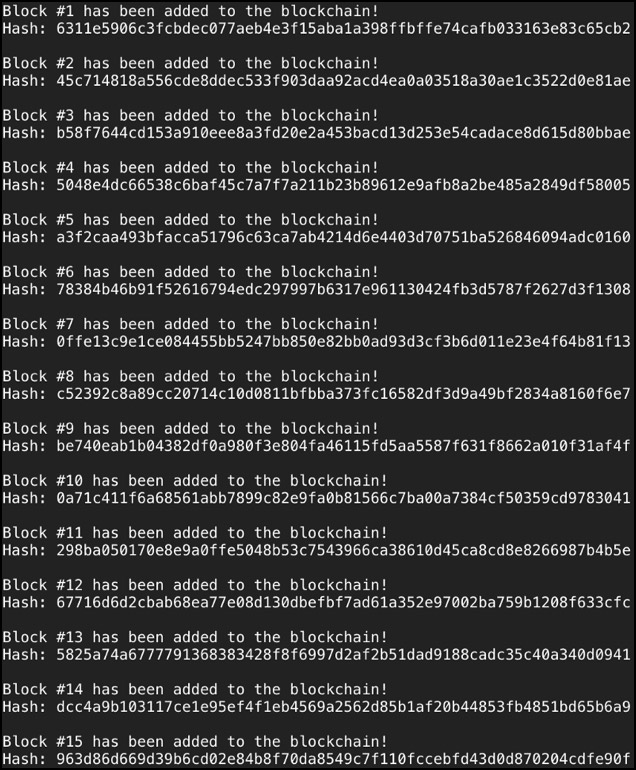Programming blockchain part 3: Python programming language
- Programming blockchain part 1: C ++ programming language
- Programming blockchain part 2: Javascript programming language
In the previous two sections you know why C ++ and JavaScript are chosen to program blockchain. In addition to these two programming languages, Python is also a popular choice in blockchain programming. This article will help you understand the reason behind it.
Python programming language
Guido van Rossum, a Dutch programmer, created Python in 1991. Python is based on a simple philosophy: Minimalist. One of the interesting things about Python is that it combines simplicity into a programming language by using spaces to denote code blocks instead of curly braces or keywords. Let's see what this means.
- How to install Python on Windows, macOS, Linux
Check out a simple 'hello world' program.
print ('Hello, world!') Compare with C ++ 'hello world' program. It is much simpler.
So what about some more complicated things? Suppose we are adding two numbers and having results.
num1 = 1.5
num2 = 6.3
sum = float (num1) + float (num2)
print ('The sum of {0} and {1} is {2}'. format (num1, num2, sum))
The result will be: Sum of 1.5 and 6.3 with 7.8
So how to program an entire blockchain using Python? The following data and code are taken from the article written by Gerald Nash on Medium.
Create blocks
First, create a block:
Block class:
def __init __ (self, index, timestamp, data, previous_hash):
self.index = index
self.timestamp = timestamp
self.data = data
self.previous_hash = previous_hash
self.hash = self.hash_block ()
def hash_block (self):
sha = hasher.sha256 ()
sha.update (str (self.index) +
str (self.timestamp) +
str (self.data) +
str (self.previous_hash))
return sha.hexdigest ()
Analyze the code
We start by entering the hash library to use the SHA 256 hash function (quite similar to Javascript).
Like JavaScript, blocks have the following values:
- Index
- Timestamp
- Data
- Previous hash
- Hash.
Then assign hash values through a function, just like in Javascript.
Create Genesis blocks
Now, create Genesis blocks:
Enter datetime as the current date.
def create_genesis_block ():
return Block (0, date.datetime.now (), 'Genesis Block', '0')
Analyze the code
Enter datetime to set a timestamp.
The task now is to simply create the genesis blocks and manually assign it some data to operate. The previous hash value is '0' because it does not point to any other block.
Create the rest of the blocks
Now, determine how the next blocks will be created.
def next_block (last_block):
this_index = last_block.index + 1
this_timestamp = date.datetime.now ()
this_data = "Hey! I'm block" + str (this_index)
this_hash = last_block.hash
return Block (this_index, this_timestamp, this_data, this_hash)
Analyze the code
So, how do we determine the values of every piece of data inside each block?
- The index block is simply the index of the last block + 1.
- Timestamp is the current date and time.
Data of the block is a simple message: ' Hey! I'm block '.
Hash is being calculated using the previously called function.
And finally, all these values will be returned to the block.
Create blockchain
Finally, create a blockchain.
blockchain = [create_genesis_block ()]
previous_block = blockchain [0]
num_of_blocks_to_add = 15
for i in range (0, num_of_blocks_to_add):
block_to_add = next_block (previous_block)
blockchain.append (block_to_add)
previous_block = block_to_add
# Tell everyone about it!
print "Block # {} đã được thêm vào blockchain!". format (block_to_add.index)
print "Hash: {} n" .format (block_to_add.hash)
Analyze the code
First, create the genesis block and set its value to ' previous_block '.
Then determine how many blocks are added. In this example, 15 blocks will be added.
Therefore, the extra block step will be repeated 15 times to add each block to the blockchain. Finally, the export of block numbers has been added to the blockchain through their index number, and the output of the hash is also exported.
This is the output:

Obviously in both Python and Javascript, you can add more complex features like Proof Of Work. If you want to learn how to do that, you should look at Gerald Nash's article. But now, at least you know how to create a simple blockchain in Python.
See more:
- Blockchain programming part 4: Java programming language
You should read it
- Programming blockchain part 5: Solidity programming language
- Programming blockchain part 2: Javascript programming language
- Top 5 languages for blockchain programming
- What is a blockchain? How does blockchain work? Pros and cons of blockchain?
- [Infographic] The effects of Blockchain on E-commerce and Security
- Great recruitment needs, a blockchain engineer can get the salary level equal to the AI developer
 Stack operator in Python
Stack operator in Python Complex () function in Python
Complex () function in Python The compile () function in Python
The compile () function in Python The delattr () function in Python
The delattr () function in Python The dict () function in Python
The dict () function in Python The function dir () in Python
The function dir () in Python